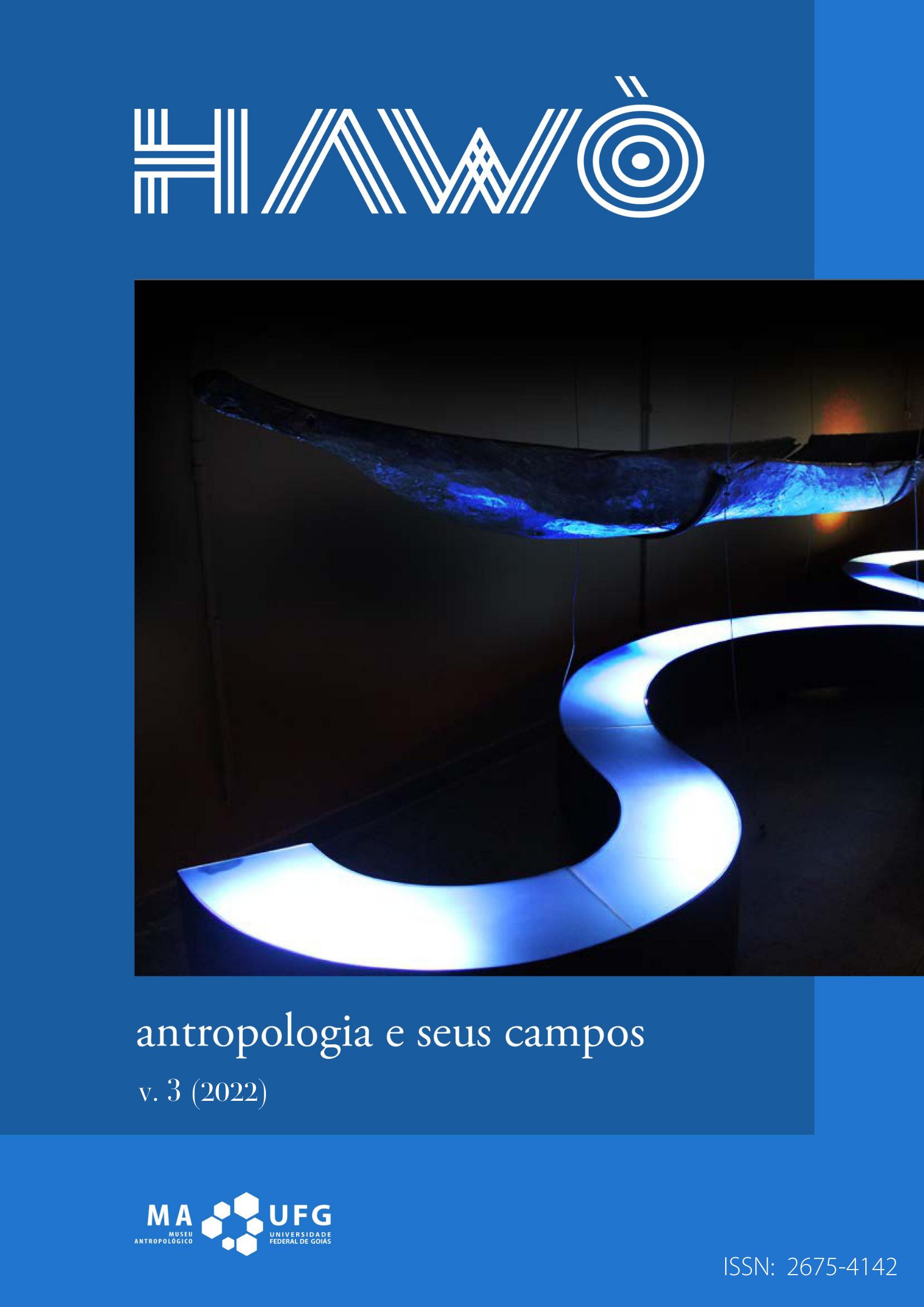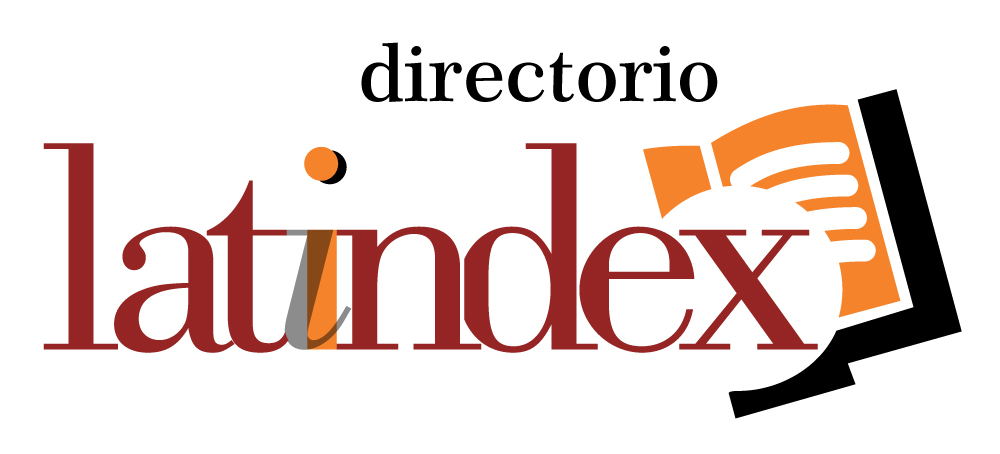Finding a home for the Ritxoko
the politics of heritage and repatriation
DOI:
https://doi.org/10.5216/hawo.v3.72391Resumen
By tracing the biography of a collection of Ritxoko, the name given to ceramic dolls made by the Iny Karajá people in the interior of Brazil, this paper reflects on the potential ramifications of repatriation. Changes in the making of the Ritxoko are inseparable from a broader history of contact, the political-ecological entanglements surrounding the resources that enable that making, and the effects of its heritagisation process. The relations in thisnatural-cultural assemblage are embedded in a moral economy that produces heritage and commodity. The analysis argues for repatriation as a method in the endeavour to decolonise museums and re- signify heritage, including the natural heritage that enables
the making of the Ritxoko. Drawing on the learning of initiatives developed in collaboration with the Iny Karajá, the proposed repatriation could bring about more inclusive forms of curatorship
with Ritxoko makers as protagonists, a necessary effort to address colonial pasts more critically and rethink possible ecological futures.
Citas
ABREU R.; CHAGAS, M. O patrimônio como categoria de pensamento. Rio de Janeiro: Lamparina; 2009.
ANDERSON, B. Imagined communities: reflections on the origin and spread of nationalism. London: Verso, 1983.
BEAR, L. et al. Gens: a feminist manifesto for the study of capitalism. Cultural Anthropology website [Internet]. 2015. Available from: https://culanth.org/fieldsights/652-gens-a-feminist-manifes to-for-the-study-of-capitalism. Accessed on: 11 out. 2021.
BENJAMIN, W. The work of art in the age of mechanical reproduction. London: Penguin. 2008 [1935].
BENJAMIN, W. The storyteller: reflections on the works of Nikolai Leskov. In: Illuminations. New York: Harcourt Brace Jovanovich; 1968 [1936]. p. 83–110.
BOLTON, L. An ethnography of repatriation: engagements with Erromango, Vanuatu. In: The international handbooks of museum studies: museum transformations. New Jersey: John Wiley & Sons; 2015.
CAMPOS, S. L. Bonecas Karajá: apenas um brinquedo? Revista do Museu de Arqueologia e Etnologia, 2002.
CHAUÍ, M. Cidade cultural: o direito à cultura. São Paulo: Fundação Perseu Abramo, 2006.
CORONIL, F. The magical state: nature, money, and modernity in Venezuela. Chicago: University of Chicago Press, 1997.
DUARTE CÂNDIDO, M.M. Nem tudo está perdido! Coleções de Ritxoko em museus da Alemanha. In: Tesouros Iny-Karajá. Goiânia: CEGRAF UFG, 2021.
EIZENBERG, E. Actually existing commons: three moments of space of community gardens in New York City. Antipode, v. 44, n.3, p. 764–82, 2011.
ESCOBAR, A. Constructing nature: elements for a poststructural political ecology. In: Liberation ecologies: environment, development, social movements. London: Routledge, p. 172-196, 1996.
FARIA, L. de C. A figura humana na arte dos índios karajá. Rio de Janeiro: Museu Nacional; 1959.
FARÍAS, I. The politics of urban assemblages. City: analysis of urban trends, culture, theory, policy, action, v. 15, n. 3–4, p. 365–374, 2011.
FÉNELON COSTA, M. H. A arte e o artista na sociedade Karajá. Fundação Nacional do Indio, Departamento Geral de Planejamento Comunitário, Divisão de Estudos e Pesquisa, 1978.
FÉNELON COSTA, M. H.; MALHANO, H. B. Habitação indígena brasileira. In: SUMA Etnológica Brasileira. Editora Vozes, 1986. Updated Version of the Handbook of South American Indians.
FOUCAULT, M. The birth of bio-politics. New York: Palgrave Macmillan, 2008.
GALLOIS, D. T. Donos, detentores e usuários da arte gráfica Kusiwa. Revista de Antropologia da USP, v. 55, n. 1, 2012.
GEISMAR, H. Anthropology and heritage regimes. Annual Review of Anthropology, v. 44, p. 71–85, 2015.
GELL, A. Art and agency : an anthropological theory. Oxford: Clarendon, 1998.
GONÇALVES, J. R. S. O patrimônio como categoria de pensamento. In: Memória e patrimônio : ensaios contemporâneos. Rio de Janeiro: Lamparina; p. 25–33, 2009.
GONZALEZ, A. From a given to a construct. Cultural Studies, v. 28, n. 3, p. 359–390, 2014.
GOULD, S. J.; LEWONTIN, R.C. The spandrels of San Marco and the panglossian paradigm: A critique of the adaptationist programme. Proceedings of the Royal Society of London. Series B, Biological Sciences, v. 205, n. 1161, p. 581–598, 1979.
GRAMSCI, A. Hegemony, intellectuals and the state. In: Cultural theory and popular culture: a reader, edited by John Storey, University of Georgia Press, 1998.
HALL, S. Whose heritage? Un settling ‘the heritage’, reimagining the postnation. Third Text, v.13, n.49, p. 3–13, 2005.
HARDIN, G. The tragedy of the commons. Science, v. 162, n. 3859, p. 1243–8, 1968.
HARRISON, R. Beyond “natural” and “cultural” heritage: toward an ontological politics of heritage in the age of anthropocene. Heritage & Society, v. 8, n. 1:24–42, 2015.
HARRISON, R. Heritage futures. Archaeology International, v. 19, p. 68–72, 2016.
HARRISON, R. et al. Heritage futures: comparative approaches to natural and cultural heritage practices. London: UCL Press, 2020.
HARVEY, D. Heritage pasts and heritage presents: temporality, meaning and the scope of heritage studies. International Journal of Heritage Studies, v. 7, n.4, p. 319–38, 2001.
HERZFELD, M. Pride and perjury: time and the oath in the mountain villages of Crete. Man, v. 25, n. 2, p. 305–22, 1990.
INGOLD, T. Bringing things to life: creative entanglements in a world of materials. Realities, Working paper #15,1–14, 2010.
KRENAK, A. Ideias para adiar o fim do mundo. Companhia das Letras, 2019.
LANDAU, R. Negative/positive combination printing. The British Journal of Photography, 1977.
LANG, L. Simulating fisherfolk and performing heritage through ritual, history, and nostalgia. International Journal of Heritage Studies, v.2, n. 7, p. 628–42. 2017.
LANG, L. Making and enabling the commons: shared urban spaces and civic engagement in North Manchester. In: Realising the city: urban ethnography in Manchester. Manchester University
Pres, 2018. p. 107–28.
LIMA FILHO, M.F. O desencanto do oeste. Editora da UCG, 2001.
LIMA FILHO, M. F.; SILVA, T. C. A arte de saber fazer grafismo nas bonecas Karajá. Horizontes Antropológicos, v. 18, n. 38, p. 45–74, 2012.
LIMA FILHO, M.F. Patrimonial citizenship. Vibrant, v. 16, p. 1–13, 2015.
LIMA FILHO, M. F.; ANDRADE, R. Imagens, tempos e classificações: do (re)conhecer ao retorno dos objetos museais para a aldeia. In: Tesouros Iny-Karajá. Goiania: CEGRAF UFG; 2021.
LINEBAUGH, P. The magna carta manifesto: liberties and commons for all. University of California Press, 2009.
LOFTUS, A. Political ecology I: where is political ecology? Progress in Human Geography, v. 43, n. 1, p. 172–82, 2019.
LOWENTHAL, D. Possessed by the past: the heritage crusade and the spoils of History. New York: Free Press. 1996.
LOWENTHAL, D. Natural and cultural heritage. International Journal of Heritage Studies, v. 11, n. 1, p. 81–92, 2005.
OSTROM, E. Governing the commons: the evolution of institutions for collective action. Cambridge: Cambridge University Press, 1990.
POLANYI, K. The great transformation. Boston: Beacon Press; 1957.
SANDELL, R. Museums, prejudice and the reframing of difference. London: Routledge, 2007.
SIMÕES, M. F., et al. Cerâmica Karajá e outras notas etnográficas. [Goiânia]: UCG Editora, 1992.
SMITH, L. Uses of heritage. London and New York: Routledge, 2006.
SPIVAK, G. C. Can the Subaltern Speak?. In: Marxism and the interpretation of culture. University of Illinois Press, 1988. p. 271–313.
STRONZA, A.L. Commons management and ecotourism: ethnographic evidence from the Amazon. International Journal of the Commons, v. 4, n. 1, p. 56–77, 2010.
TAVEIRA, E. Etnografia da cesta Karajá. [Goiânia]: Universidade Federal de Goiás, 1982.
THOMPSON, E.P. The moral economy of the english crowd in the eighteenth century. Past & Present, v. 50, p. 76–136, 1971.
TONKIN, E. Narrating our pasts: the social construction of oral History. Cambridge University Press, 1992.
TSING, A.L. The mushroom at the end of the world: on the possibility of life in capitalist ruins. Princeton: Princeton University Press; 2015.
TUCK, E.; K. W. YANG. Decolonization is not a metaphor. Decoloni- zation: Indigeneity, Education & Society, v. 1, n. 1, p. 1–40, 2012.
WHAN, C. Ritxoko: a voz visual das ceramistas Karajá. Doctorate thesis: Universidade Federal do Rio de Janeiro; 2010.
WUST, I. A cerâmica Karajá de Aruanã. Universidade Católica de Goiás, Goiânia, v. 2, p. 91–165, 1975.
Descargas
Publicado
Versiones
- 2023-01-24 (3)
- 2022-11-08 (2)
Cómo citar
Número
Sección
Licencia
Derechos de autor 2022 Luciana Lang

Esta obra está bajo una licencia internacional Creative Commons Atribución 4.0.
Os(as) autor(es/as) que publicam na Revista Hawò são os responsáveis pelo conteúdo dos artigos assinados e detém os direitos autorais. Concedem à revista, o direito de primeira publicação com o trabalho simultaneamente licenciado sob a Licença Creative Commons Atribuição-Não Comercial (Open Archives Iniciative - OAI). Esse recurso, utilizado para periódicos de acesso aberto, permite o compartilhamento do trabalho para fins não comerciais com reconhecimento da autoria. Caso o texto venha a ser publicado posteriormente em outro veículo, o autor deverá informar que o mesmo foi originalmente publicado como artigo na revista Hawò. Assim sendo, ainda que a revista seja detentora da primeira publicação, é reservado aos autores o direito de publicar seus trabalhos em repositórios institucionais ou em suas páginas pessoais, mesmo que o processo editorial não tenha sido finalizado.
É reservado à revista, o direito de realizar alterações de ordem normativa, ortográfica e gramatical visando manter o padrão de língua, respeitando-se, porém, o estilo dos autores.







